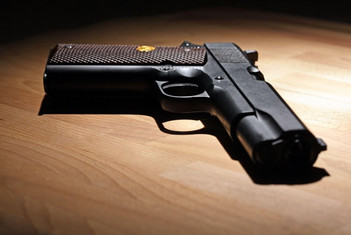1911 Parts That Can Help Reduce Recoil
Aug 10th 2024
Thinking about building a 1911 pistol? The basic design is one of the most popular that’s ever been designed; the prevalence of clones like Rock Island 1911 pistols is proof of that.
But there are 1911 parts in a stock 1911 build kit that could, and maybe should be replaced, especially if you have an eye on performance, specifically recoil reduction.
With that said, here are 4 1911 parts that impact recoil, and how replacing them can help make a difference.
The Recoil Spring
The good thing about .45 ACP is it’s a fairly hard-hitting round that throws a lot of energy - that means it has a lot of stopping power and produces a lot of recoil.
In this arena, installing a heavier, stiffer recoil spring can help minimize the latter force. With a lighter caliber, this could hamper cycling, but not with .45.
The lighter the recoil spring, the more energy will remain in the slide at the end of its rearward progress, which will then transfer into your wrists and frame.
With a stiffer recoil spring, more of that energy will be absorbed, over a longer window of time, ensuring not only smooth cycling but when perfectly executed, a reduction in recoil as well.
The Guide Rod
How can the guide rod reduce recoil when it isn’t even a moving part, you ask? Easy - it has to do with mass.
As the mass of the bullet influences muzzle energy and thereby recoil, so too does the mass of the gun (well, the static mass, that is, or the parts that don’t move). The heavier a gun is, the more that mass will absorb the energy rather than transferring it to you.
There are lots of things you can do to add static mass to a 1911, but the one that makes the most sense if recoil reduction is your aim is to add a heavier guide rod.
There are tungsten guide rods out there that are substantially heavier than steel. This increases the static mass of the gun and helps absorb recoil energy rather than sending it back into you.
There is another positive effect here, though, and that is that a heavier guide rod will also push the muzzle down. This, in turn, helps counteract muzzle flip, which helps keep your sights on target, enabling faster, more accurate follow-up shots.
The Slide
Something needs to be cleared up here, since earlier in this post we mentioned that adding mass reduces recoil.
There are two types of mass in any handgun with an autoloading action. Static mass, the mass that doesn’t move, (i.e., the frame) and reciprocating mass (i.e., the slide, or in the case of an AR, the bolt carrier group).
The higher the static mass, the lower the recoil, and the higher the reciprocating mass, the parts that move, the higher the recoil - all else, of course, being equal.
Since the slide moves, the heavier the slide is, the greater the recoil will be. Therefore, if you lighten the slide, recoil should experience an attenuation as well.
You don’t need to go crazy and get a skeletonized slide. But there are lighter slides you can get that should in theory (as well as in practice) help you shave a bit off recoil, resulting in a lighter, smoother shooting 1911.
The Barrel (Specifically, What You Add to It)
Last but not least, let’s take a closer look at your 1911’s barrel. The barrel you choose can have the biggest impact of all on recoil reduction.
The key here is not the barrel itself, but how you configure it. What you want here is a threaded barrel.
If you get a threaded barrel, you can install a device known as a compensator. These muzzle devices change how gasses are vented at the muzzle, dispersing the forces of felt recoil.
The effect of installing a compensator is this: you can cut felt recoil by as much as 50%, all without adversely affecting shot power in any way. A compensator is the 1911 part to install if you really want to decrease recoil.
And, if you love the rest of the parts your 1911 build kit came with, and don’t want a threaded barrel, just get a barrel with an integral compensator.

Get These and Other 1911 Parts Here
We carry these and other 1911 parts, along with 1911 build kits and magazines. Those mentioned here can help you reduce recoil substantially.
There are other things you can do, though. For instance, you can shoot lighter loads. Look at muzzle energy the next time you buy .45 ACP. The lower it is, the lower overall felt recoil will be.
High-powered +P and defensive .45 ACP loads generally produce more muzzle energy and therefore more recoil than target FMJ and flat-nosed rounds. If you don’t see muzzle energy stamped on the ammo carton, look at bullet weight (measured in grains) and muzzle velocity. All else being equal, the lower the weight and the slower the bullet, the less recoil will be generated.
Then you can consider stance and form. Holding the handgun properly will also make a big difference. Make sure you maximize surface area contact between your hands and the gun, bend your knees slightly, and lean forward just a bit. That will help you absorb more recoil and control the gun.
These are not 1911 parts, but remember, you are just as much a part of the equation as the gun you shoot. There is no magic part you can install that will entirely eliminate recoil - or make you hit the target, for that matter.
At any rate, take a look through our collection of 1911 parts, make the changes you think will be most impactful for you, and then get to the range and train. That’s the other half of the picture when it comes to wrangling recoil and shooting accurately.

